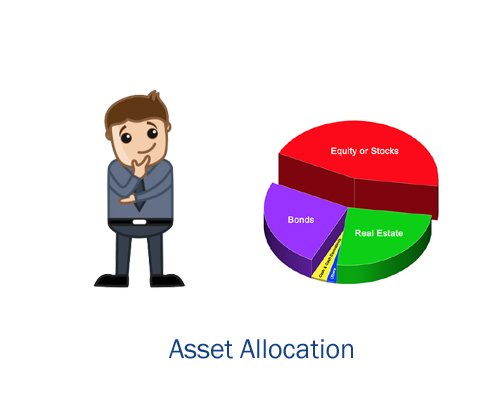Don’t put all your investment in one basket. Make use of asset allocation and spread your investment in the various asset class. This is famous advice of Investment guru and stock market expert Warren Buffett. But unfortunately, people don’t follow this advice.
While taking a financial decision, most of the people are unpredictable. They take financial decision randomly or based on someone’s advice. They never plan their finance. The unplanned financial decision leads to a skewed portfolio consisting of only a few asset class or multiple asset class.
Remember – Buying too many assets or only a few assets can hurt your finances. You need to balance your portfolio to get better returns from investment.
In this post, we will take a look at various asset allocation strategies. We will also discuss about How to Decide Asset Allocation?

What is Asset Allocation?
Asset Allocation is an investment strategy of dividing investment among various categories such as equity, debt, mutual funds etc. The preliminary purpose of asset allocation is balancing risk and rewards. The asset allocation is done based on investor’s risk tolerance, goals and investment time frame.
Two individuals with the same goal may still have different asset allocations. The one with a higher risk-carrying capacity and long-term investment goal may decide to invest more money in equity. The other one with low-risk appetite or short-term investment goal may invest more money in a debt fund or fixed deposit.
There are three main types of asset classes – equities, fixed-income and cash. All these assets have different risk and return characteristic. You need to find out which asset basket suits you for which investment goal.
Why Asset Allocation is Important?
The investment without proper asset allocation is random investment. A random investment always leads to financial disaster. Asset allocation provides proper diversification to portfolio. When you diversify your portfolio across various asset class, you are reducing your risk. This is because when one asset class is not performing, it can be offset by performance of another asset class. In addition to reduction in risk proper asset allocation also offers better returns.
Here is detail about asset allocation strategy which is used by me for making investment.
How to Decide Asset Allocation?
Identify your financial goals
The first step in deciding asset allocation is identifying your financial goals and timelines. In other words, deciding the purpose of investment and time when you will need money. Some example of financial goals are –
- Early retirement at the age of 50 years with corpus of 3 Cr.
- A requirement of 50 Lakh Corpus for child education at the age of 42 years.
- Required 50 Lakh for children marriage at the age of 48 years.
Once your goals are identified you need to decide how much money is required for investment and how much risk you can take for each financial goal.
If your financial goals are of longer duration you can afford to take higher risk and invest your money stock market. If your financial goals are short term you can go for low-risk assets such as bonds or fixed deposit.
Assess your risk profile
A second important aspect to consider while deciding asset allocation is your risk profile. You need to ask yourself what your risk tolerance is? If you are OK with taking a risk, you can go for risky investment options. If you are risk averse you can go for conservative investment options.
Determine your target portfolio
One of the simplest ways to determine your target portfolio is based on your age. Your risk-taking capacity will reduce with your age. The thumb rule of asset allocation says that individual should hold a percentage of stocks equals to 100 minus their age. This means if your age is 25 years you can keep 75% of money in stocks. If your age is 60 years it is advisable to keep only 40% money in the stock market.
Once you determine your target portfolio percentage you need to go for selection of investment.
Select your Investment
In order to select your investment, you need to be sure about the asset class, expected returns and lock-in period. Ideally, you should hold a variety of equity assets from small cap, mid cap, and large cap segment. These stocks should be from various industry sectors. If you are planning to invest in the mutual funds. Make sure to select a mutual fund from various segment such as mid cap, small cap, large cap, multi cap etc. Once you are done with an investment you need to go for the next step which is review and rebalance.
Review and Rebalance
In review and rebalance step, you need to review your portfolio performance. If your portfolio is not performing as per expectation you need to rebalance your portfolio. Make sure to perform this step time to time. It will help you in increasing your portfolio performance.

